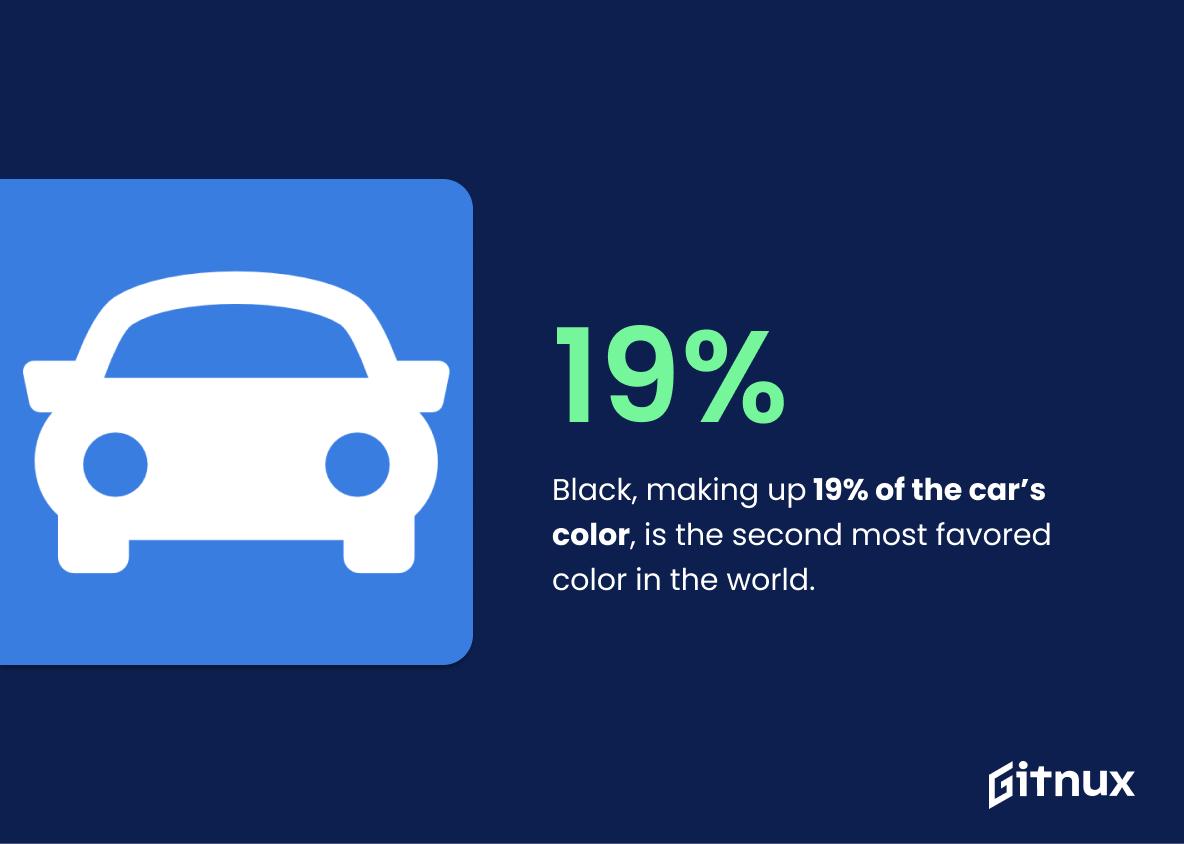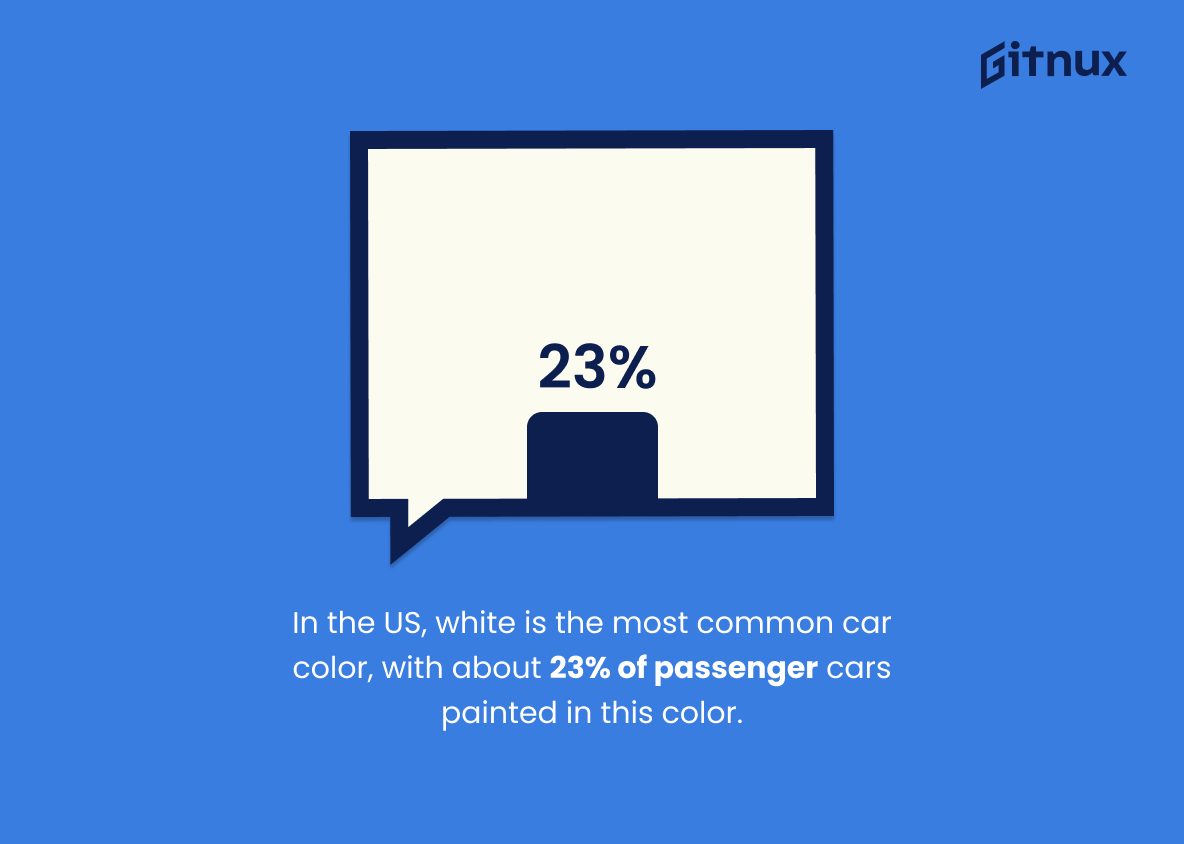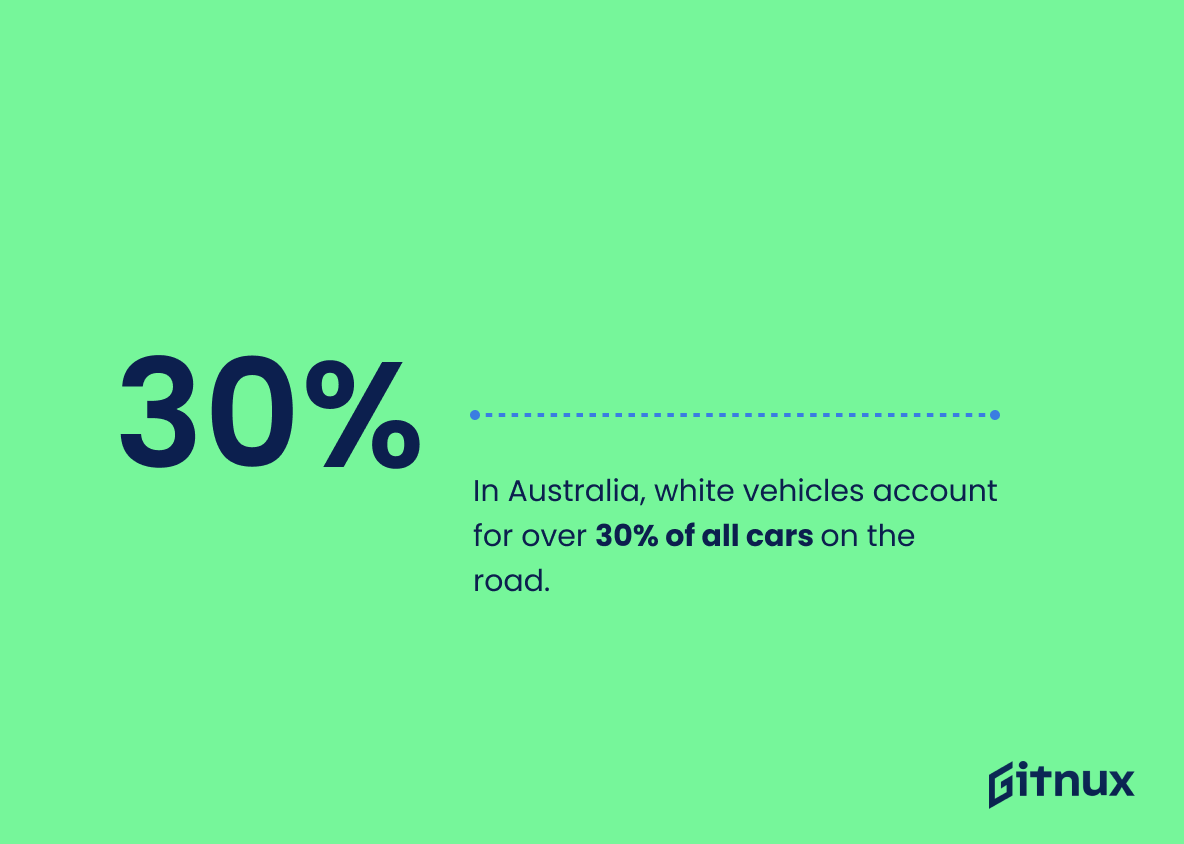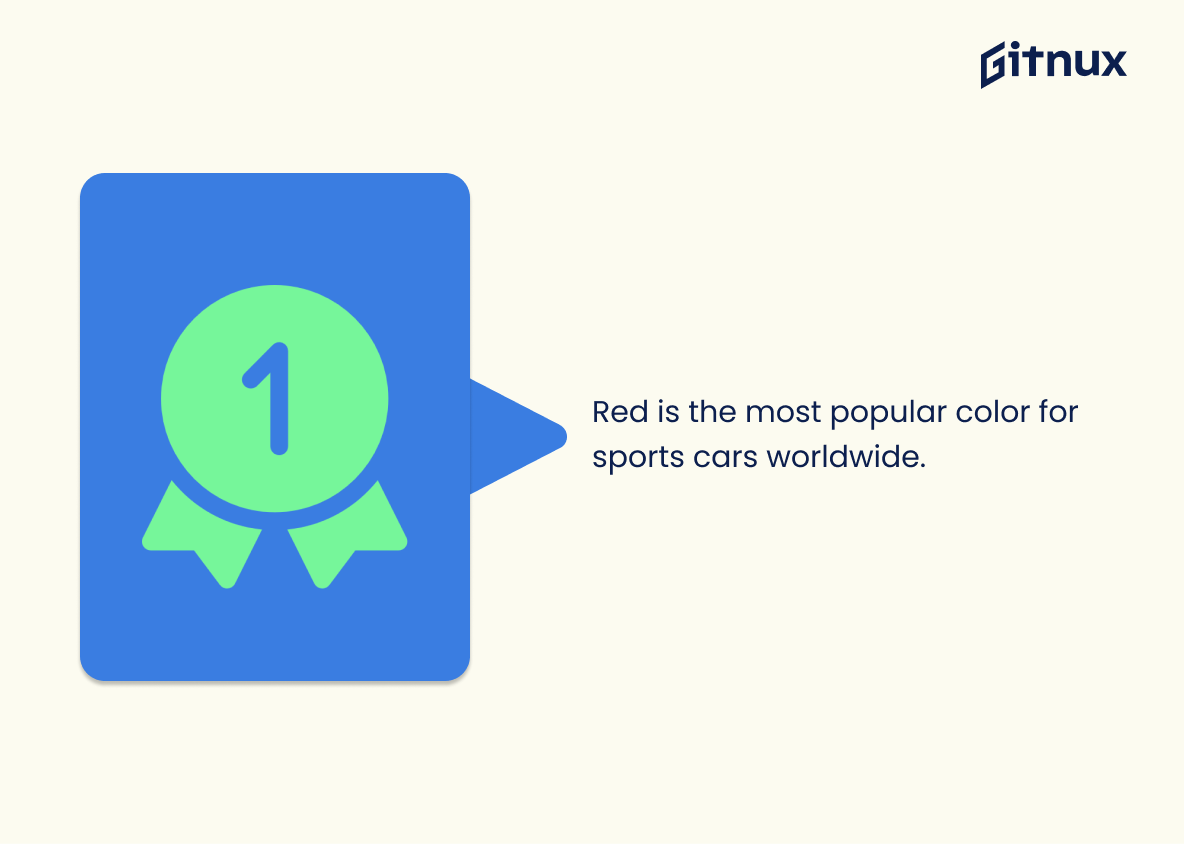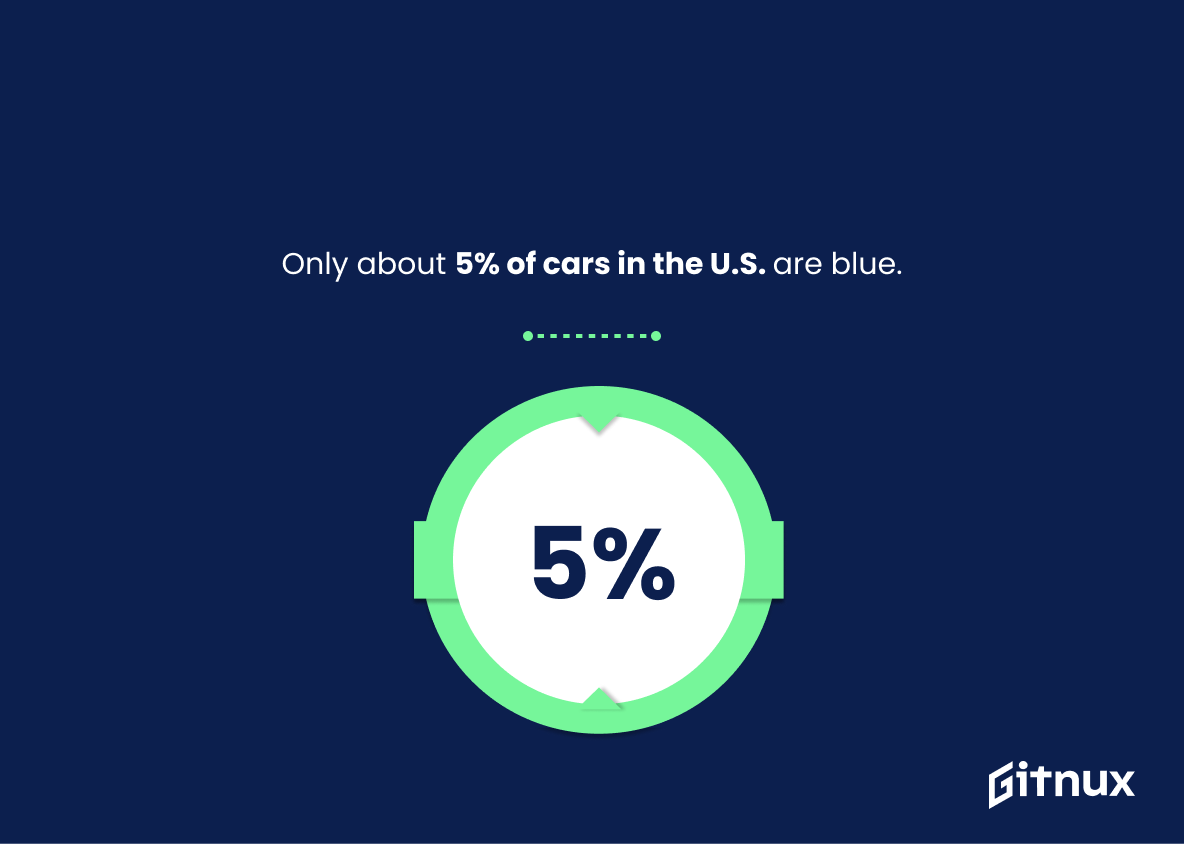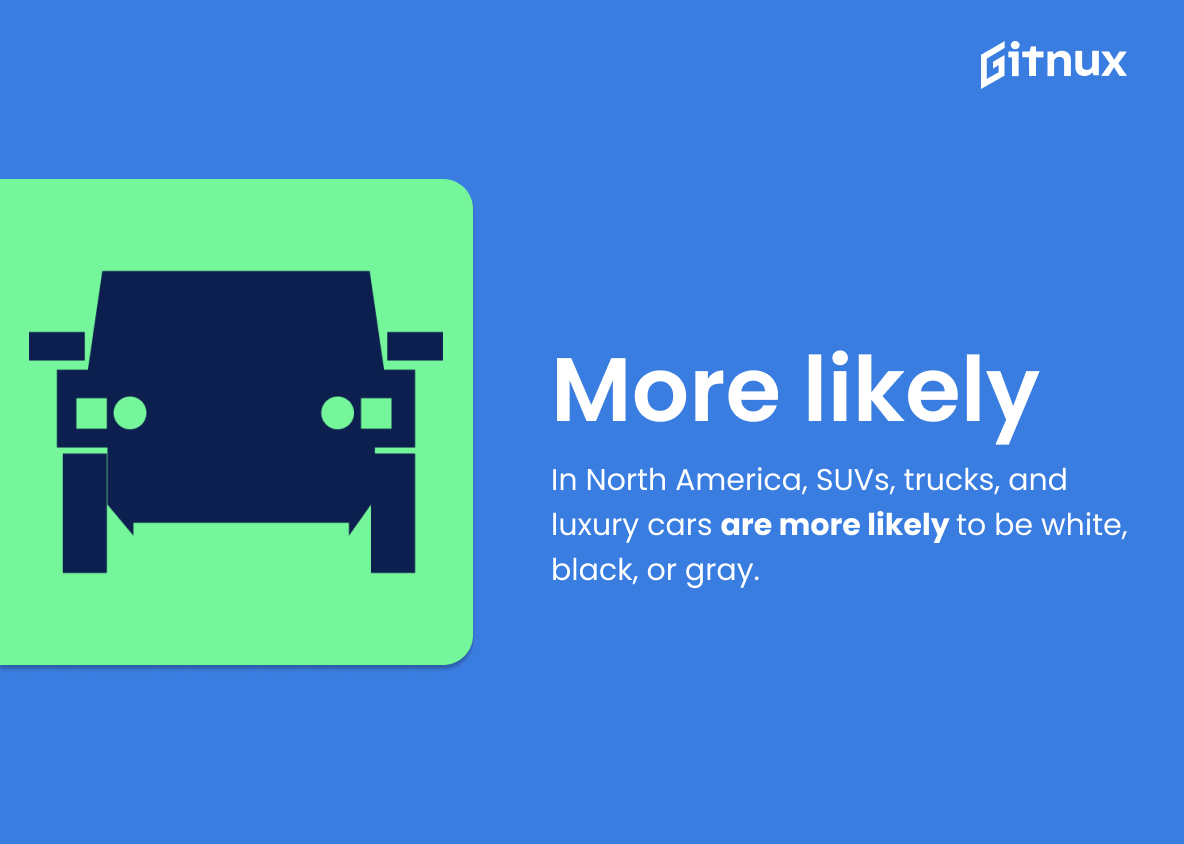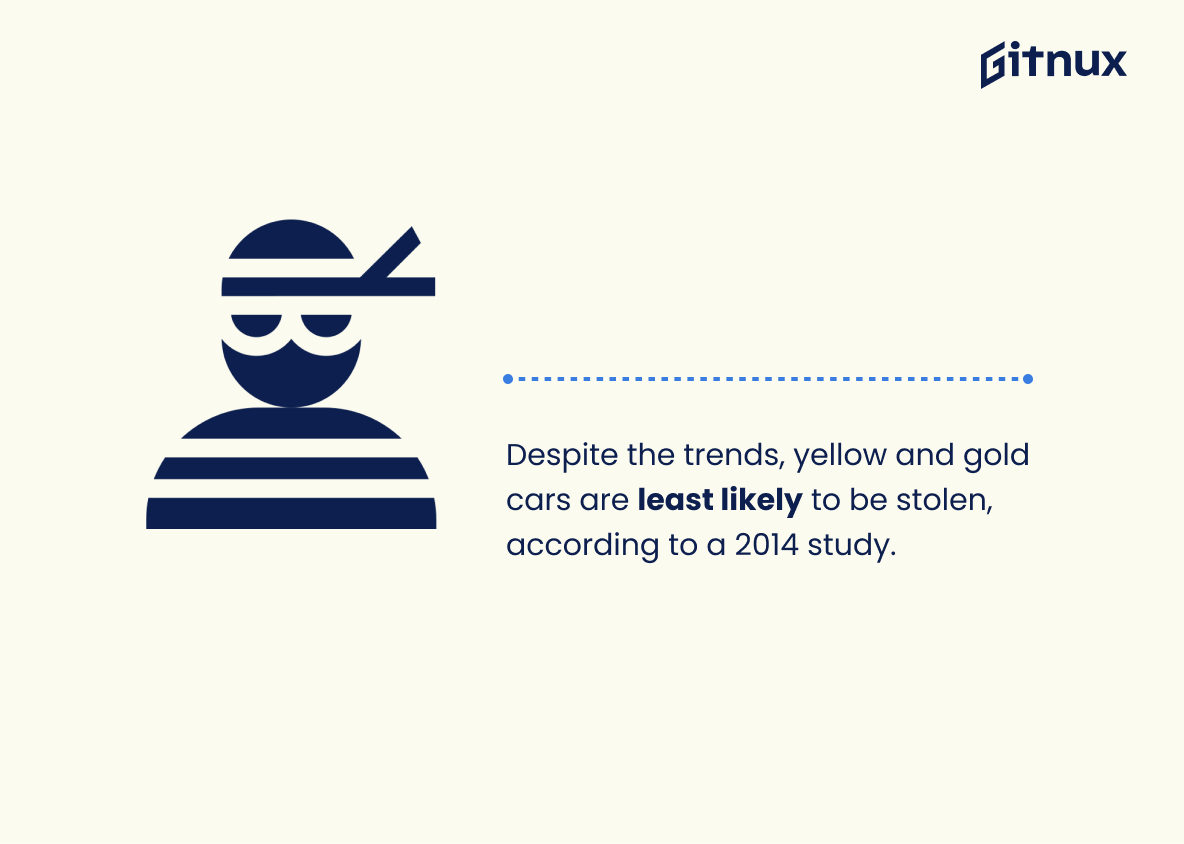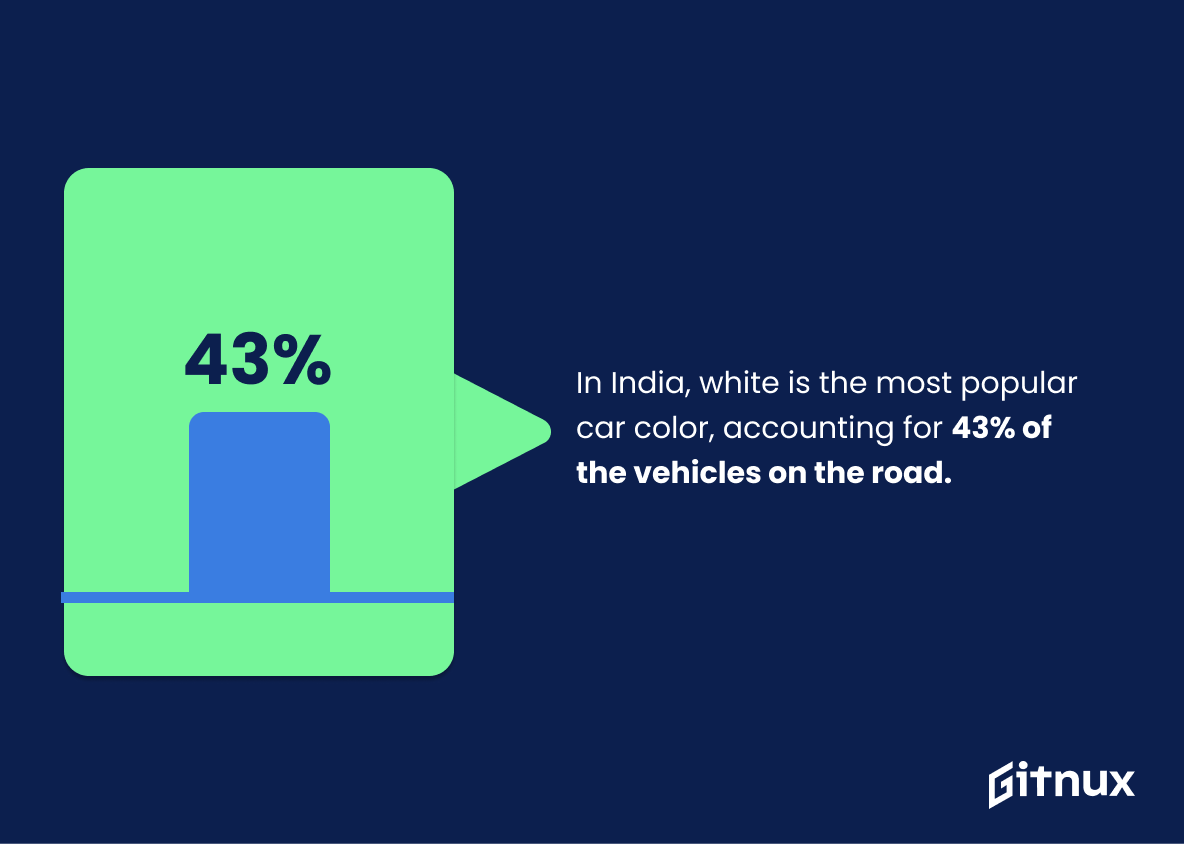Cars have always been a significant component of our lives, an expression of our personalities and preferences wrapped up in horsepower and metal. However, even with all the specs and features, one factor that often captures instant attention is the color of the car. A subtle yet potent aspect, the hue of your vehicle can say a lot about who you are.
In this blog post, we will delve into fascinating car color statistics, exploring the world’s most popular car colors, trending shades, regional preferences, and the psychological implications. So, buckle up as we drive into this colorful journey of discovery, shedding light on some intriguing facts and figures that shape the automotive world’s chromatic landscape.
The Latest Car Color Statistics Unveiled
Black, making up 19% of the car’s color, is the second most favored color in the world.
With a bold splash of 19% color representation worldwide, Black has gracefully parked itself in the runner-up position of favored car colors. Taking the lead in only 1 out of 5 vehicles, this intriguing figure accentuates the critically dominating role Black plays in the automotive color spectrum.
Not just a matter of aesthetic preference, this color preference potentially portrays a vibrant picture of cultural trends, purchase preferences, perhaps even the psychology behind car ownership. Hence, don’t underestimate the power of Black; as it adds depth and sophistication to our understanding of global styles and tastes when examining Car Color Statistics.
In the United States, about 23% of passenger cars are painted white, making white the most common color for cars.
Delving into the nuances of car color, the prevalence of white as the predominant hue for 23% of passenger cars in the United States provides a fascinating insight. This vibrant revelation whispers into the aesthetics preferred by American car owners, illuminating market trends and consumer choices. It serves as a milky way to understanding the cultural, aesthetical, and even philosophical preferences of car buyers, augmenting our collective knowledge in the sphere of automobile color statistics.
In Australia, white vehicles account for over 30% of all cars on the road.
Delving into the realm of car color statistics, a revelatory spotlight shines on Australia, illustrating an intriguing color preference for their automobiles. The predominance of white vehicles, accounting for over 30% of all cars on the road, lends credence to the significance of color choice as a reflection of cultural, climate, and personal preference.
The dominance of this neutral hue in Australia’s vehicular landscape opens up a treasure trove of conjectures and ideas. It might hint towards white being a favored color due to its association with heat reflection – a rational choice in Australia’s often intense heat. Alternatively, the preference for white could also be a reflection of popular trends in car manufacturing and advertising or a by-product of consumer psychology, where white is perceived as a color signifying simplicity, purity, and modernity.
The scope of this statistic extends beyond mere numerical data, becoming a prism through which we explore the deeper socio-cultural nuances that play out in everyday choices like the color of our cars. Furthermore, it can serve as a crucial data point for automobile manufacturers, marketers, and, of course, car enthusiasts unpacking the secrets behind citizens’ color preference on Australia’s vehicular highways.
Red is the most popular color for sports cars worldwide.
Diving into the spirit of car color statistics, the revelation that red stands as the toast of the crowd when it comes to sports car colors worldwide is not just a fun fact, but it offers inspiring insights into consumer preferences and buying behaviors. It injects a powerful tone to our discussion by emphasizing the cultural, artistic, and even emotional connections we have with the color of our vehicles.
It’s a vibrant showcase of our collective propensity towards passion, power, and speed – all traits often associated with red, brilliantly mirrored in the high-octane world of sports cars. Plus, this data point serves as a robust launch pad to explore further into how and why certain colors supersede others, and the potential industry implications that ripple from it.
Only about 5% of cars in the U.S. are blue.
The vibrant shade of azure is a somewhat rare hue adorning only about 5% of cars in the U.S, adding an element of exclusivity to this color. Delving into the color preferences of motorists, this small percentage illuminates the broad landscape of chromatics in the automotive industry, highlighting an apparent predilection for more neutral or mainstream colors among American drivers.
As we explore the comprehensive palette of vehicular aesthetics, this figure provides a crucial piece of the puzzle, offering insights into cultural trends, consumer psychology, and even, perhaps, the complex interplay between car color and vehicle safety. As such, it paints an intriguing picture of our monochromatic motoring habits, paving the way for more nuanced discussions about why we choose the cars and colors we do.
In North America, SUVs, trucks, and luxury cars are more likely to be white, black, or gray.
Delving into the chromatic choices of North American drivers and their favored vehicle types, the proliferation of white, black, and gray vehicles in the realm of SUVs, trucks, and luxury cars, forms an interesting revelation. This color statistic agitates an important narrative thread in descripting car color preferences, challenging the rainbow of possibilities and settling, predominantly, on a monochromatic palette.
It lays bare an inclination towards muted, classic tones, which could be born out of factors like heat management, durability, aesthetics, or perceived value resell potential. Consequently, this bit of information is instrumental in crafting a balanced, lucid, and colorfully diverse conversation centered on car color statistics. It ensures the spotlight illuminates not only the spectrum of automotive colors out there, but also the prevalent ones that mark the lanes and highways of North America.
In 2020, beige experienced a rise in popularity in North America, with its market share rising to 3%.
In a canvas of infinite shades, a subtle surge of a certain color can symbolize a shift in preferences and choices. As such, the upward tick in beige’s market share to 3% in 2020, offers an interesting detour in the color palette of North American car owners. A seemingly humble color, often associated with being simple or conventional, this rising trend in beige may signal a return to subtlety or a need for calmness in the automobile aesthetic, particularly when considered in the context of Car Color Statistics.
A crescendo from merely pale to popular, this shift could influence future marketing campaigns, design directions, and even production decisions within the automobile industry. The statistic gives us a glimpse into evolving consumer choices, opening avenues for further exploration and discussions on color trends in the automotive world.
Despite the trends, yellow and gold cars are least likely to be stolen, according to a 2014 study.
As we journey through the fascinating world of car color statistics, this 2014 study provides an intriguing insight. When it comes to automobile theft, it appears yellow and gold cars don’t lure thieves as much as other colors. So, while deciding your next car’s color, this nugget of information could potentially shift your choice towards these less appealing-to-thieves hues. Integrating this unexpected yet vital information makes our blog richer in depth and scope, thus illuminating multiple facets of car color dynamics that look beyond mere aesthetics.
In India, white is the most popular car color, accounting for 43% of the vehicles on the road.
Highlighting that white is the color of choice for 43% of vehicles in India gives a stupendous insight into the preferences of the world’s second most populous country. It paints a picture of the automotive scene in the country, informing businesses, car manufacturers, designers, and even customers about the dominance of this shade in the market.
This vivid peek into such a large automobile market can guide production decisions, marketing strategies, and reveals the aesthetic choices made by Indian car owners. Strategically speaking, it may throw light on potential trends, buyer tastes, and cultural attitudes.
About 75% of vehicles in Japan are either white or silver.
When venturing into the realms of car color statistics, it’s fascinating to uncover that about 75% of vehicles parading the roads of Japan embrace the aesthetic tones of either white or silver. This intriguing piece of data from the Land of the Rising Sun stirs considerable interest as it offers insight into the consumer preferences and color trends that rule within one of the world’s most sophisticated automobile markets.
This pearl of information could also be leveraged to forecast likely future preferences in neighboring markets or countries harbouring a fervent fascination for Japanese automotive design. Moreover, it provides a palette of understanding into cultural interpretations of color, where white is often considered symbolic of purity and cleanliness while silver can imply modernity and sophistication.
With Japan being a noteworthy figurehead in the global automobile industry, such a high percentage of cars modelled in these two colors, and the reasons behind this, becomes a captivating focal point within the vibrant spectrum of car color statistics. Our understanding, thus, isn’t just enriched on the subject of automotive hues, but also on the interplay of culture, aesthetics, and consumer behavior in the automotive world.
Conclusion
In sum, car color illuminates surprisingly insightful statistics and trends. It is evident from our discussion that specific colors can speak volumes about a car owner’s personality, car’s resale value, safety, and even possible maintenance costs. Through our exploration of car color statistics, we’ve delved into the realm where psychology meets practicality.
We’ve unmasked the allure behind popular colors while shedding light on the underrated yet unique choices. As more innovative car color technologies continue to evolve, such statistics will become further fascinating. The essence of this information shouldn’t just influence your next car’s color choice; take it as an exciting, enlightening dive into the often-overlooked aspect of the automotive world. Remember, the color of your car is more than just a hue; it is a silent yet powerful component of your identity on the road.
References
0. – https://www.www.autobodynews.com
1. – https://www.ppg.com
2. – https://www.www.axalta.com
3. – https://www.www.autolist.com
4. – https://www.www.nbcnews.com
5. – https://www.www.telegraph.co.uk
6. – https://www.www.autocarindia.com
7. – https://www.www.autonews.com
8. – https://www.www.carsguide.com.au
